Acknowledge, Empower, Represent: How to Show Up for Black Lives
Program
Highlights
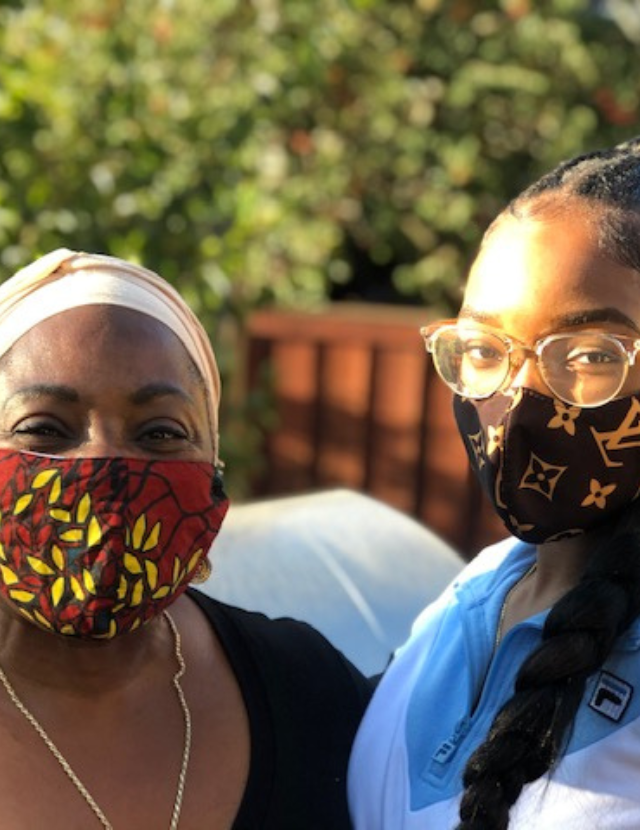
African Americans experienced some of the highest rates of illness and death from COVID-19. PHI's Together Toward Health connected with leaders in the Black community to give them the resources to continue listening, empowering, and addressing the needs of those who are most affected by COVID.
African Americans were more likely to get sick and die from COVID-19, when compared to other populations.
Due to inequities, lack of resources and other factors, Black communities were less likely to receive the COVID vaccine.
100s of partners and CBOs were able to come together to bridge the health gap for Black communities and save lives.
-
Focus Areas
Capacity Building & Leadership, Communicable Disease Prevention, Healthy Communities -
Expertise
Coalition & Network Building, Outreach & Dissemination -
Strategic Initiatives
COVID-19
It is widely known that one of the great injustices we witnessed throughout the past two years and to this day of the COVID-19 pandemic is the extreme and disproportionate impact of the virus on Black and African American communities across the country.
Not only were Black people more likely to die or be hospitalized from the virus, but they also saw lower rates of vaccination. Experts pointed to a variety of factors, from systemic inequities, including lack of distributed resources and destabilizing poverty, to preexisting health conditions and distrust due to current and historical mistreatment from the healthcare system.
But in California, through the intensive efforts of hundreds of leaders and organizations, we see a more hopeful picture. Despite numerous barriers, Black-led community-based organizations (CBOs) throughout the state have persevered in bringing information, resources and vaccinations into their neighborhoods and saving lives. We spoke with two incredible CBOs funded by the Public Health Institute’s Together Toward Health program to understand what it takes to better support and reach Black communities for more equitable public health.
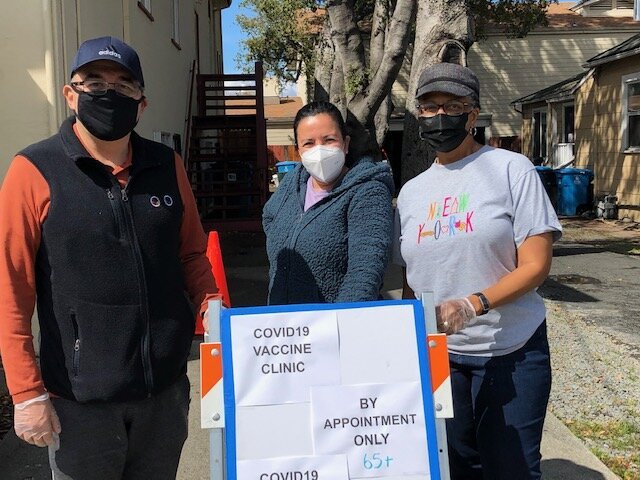
Listen and acknowledge
If you want to help the community, you need to ask them,” said Lisa Tealer, executive director of Bay Area Community Health Advisory Council (BACHAC). “You need to involve them, you need to get feedback from them. It’s really not rocket science, but it seems to be a challenge because too many times, people still come in with the solution pre-packaged.
As a well-established and respected organization advocating for health justice in San Mateo County, BACHAC was able to quickly get out into the community to connect with people and ask what was needed, whether with surveys and focus groups or in good old-fashioned sidewalk chats. Through listening, Lisa and her team were able to quickly update their website and other materials with the frequently asked questions they heard, about food distribution, about testing and vaccinations, and about job insecurity. And crucially, they heard and acknowledged the concerns and skepticism percolating in the community.
If we don’t acknowledge it, we can’t fix it,” explained Lisa. “We have to have those uncomfortable conversations, particularly because of the history and trauma of mistreatment of African Americans by the medical community.” Lisa and the BACHAC team worked with the county to create a guide for public health workers with conversation starters and background information to better navigate these important acknowledgements of inequity.
At Black Wellness and Prosperity Center (BWPC), an organization dedicated to serving African American women and babies in Fresno, President and CEO Shantay Davies-Balch and her team heard similar fears about the vaccine at local vaccination clinics and embarked on a listening tour to better understand how to serve pregnant Black women.
“This was a marginalized population that no one in the state was really speaking to specifically, with a lot of deeply rooted mistrust,” said Shantay. “We needed to find out what they were thinking about and what information and resources would be useful for them.”
Through their sessions talking with and listening to local community members, BWPC learned that it was critical for people to feel that they’re not just being told what to do, but being heard and given holistic approaches. The interviewees shared a need for practical information and answers to questions like, ‘How else can I keep my family safe if I get COVID while my kids aren’t vaccinated?’ or ‘How do I deal with family visitations after birth?’ or ‘What do I need to know about breastfeeding with COVID?’
They expressed frustration at the way they felt unheard and demanded upon by the medical system when it came to their pregnancies and their own health. As Shantay explained, “The takeaway message was basically, ‘Don’t just tell me to get vaccinated. Listen to me, I want to be a part of my care solution and I don’t want to be dismissed.’”
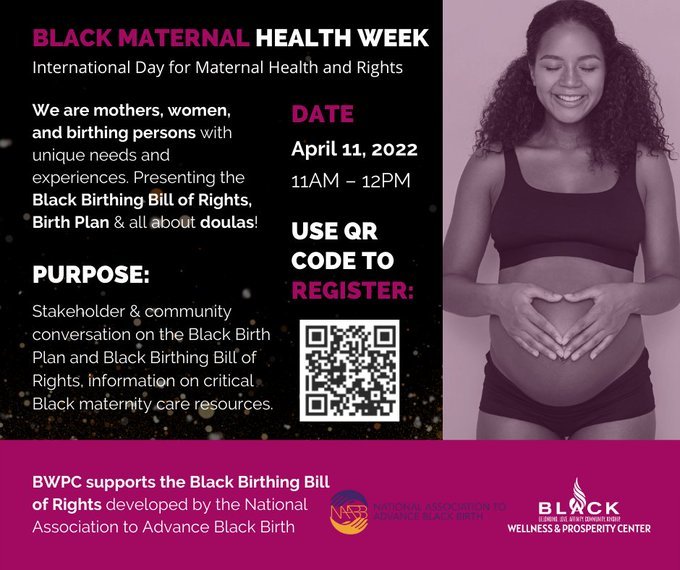
For BWPC, the ability to leverage their TTH funding to specifically focus on pregnant women and to utilize flexible funds for the necessary time and work just listening to their community was transformative. Rather than going out with facts and untested messaging, the BWPC team was able to take an exploratory approach to ensure their tactics would truly reach and resonate with their population.
Inform and empower, with patience
The insights BWPC team gathered were incorporated into BWPC’s community education and stakeholder engagement efforts, and also shaped the message of the Black Maternal Health Week in Fresno, in 2022. Through TTH and other funding partners, they were able to place billboards and other ads all around Fresno to reach Black/African American women and families.
The messages focused on recognizing each individual’s expertise over their own body and in making choices around their own healthcare, while also implicitly promoting the COVID vaccine. BWPC also took care to provide clear, evidence-based information in their education materials and encouraged critical thinking, without pushing for specific decisions. “You can see in all our materials, our advertisements, and our work, that it all goes back to our learning that our COVID efforts have to be grounded in overall health and agency, and helping people make their own decisions about their healthcare,” said Shantay.
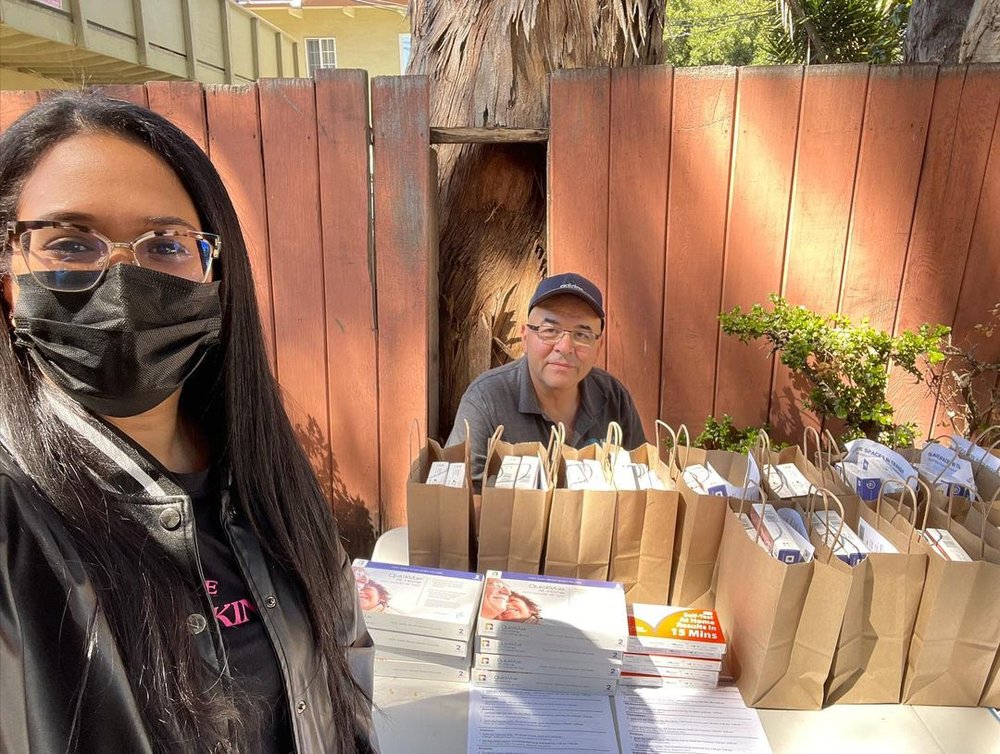
Empowering folks to make up their own mind is also key to BACHAC’s approach as a trusted resource and community partner. Along with training BACHAC’s community health workers to have the difficult but necessary conversations around vaccine misinformation and the understandable hesitation the African American community might have around medical and government institutions, Lisa and her team focused on equipping the community with as much useful information as possible.
“Ultimately, that community member has to make the decision for themselves,” explained Lisa. “And that takes time. I remember one woman I spoke to at least three times before they decided to get vaccinated. And she told me how much she appreciated that I never judged her in that process, just answered her questions and trusted her with the information she needed. And as a result, they got the vaccine and brought their family and relatives to get vaccinated too.”
Through TTH’s flexible approach and funding, Lisa and her team were enabled to take the time to build the trust needed to change hearts and minds. “I really appreciated that about TTH, they understood that this kind of work takes time,” said Lisa. “You can’t just roll up in the community and expect people to just come and take this vaccine. You need to talk to people and give them the chance to marinate over that information and come back to you with questions. I appreciated the patience, because we were developing those relationships.”
Representation really matters
As extreme health inequities were further exposed through the pandemic, the concept of culturally competent care became a hotly discussed topic. How much does it matter? What does that look like? For deeply embedded and community-led organizations like BACHAC and BWPC, the answers are quite obvious.
“It really makes a huge difference when someone serving you looks like you,” said Shantay. “One simple way to accomplish that is to make sure you have diverse representation on your team, whether in education, age, or background. We focused on building a team that was diverse and that could, to the best of our ability, represent multiple Black communities.”
“It’s not only the method, but also who’s delivering the message,” explained Lisa. “Are folks getting messages from people that they trust, people that look like them, that know their community and know their challenges?” For BACHAC, this looked like hiring and training more community health workers from within the community to canvass and staff events, as well as bringing in Black experts and leaders for their Wellness Where You Are webinar series, ensuring that people could see themselves represented in the conversation around COVID.
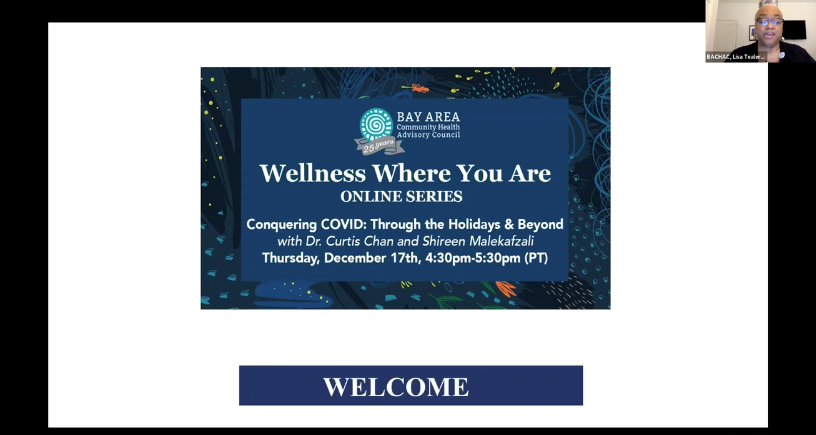
And representation matters not just on the ground with those doing the work, but also in the rooms where decisions get made and dollars get allocated. Both organizations had examples of intervening to ensure that their communities would actually get served, whether fighting for phone-based vaccination appointments because they knew many folks would not have consistent access to the internet, or changing vaccine clinic locations to the places Black community members actually frequented.
Being in those rooms and helping shape decisions have not only ensured that outreach was effective, but also continued to show the value of having community leaders engaged from the beginning. “A lot of our systems, particularly our healthcare systems are now understanding and appreciating the value of someone who’s connected to the community, that can speak the language and get the information out to the people who need it,” said Lisa. “It’s critical for us to be able to all work together and really address the needs of the community.”
But we must not just rely on the tenacity and partnership savvy of community-based organizations to wrestle their way into those discussions, and rather build better processes to involve them in every step of the way. “It all comes back to the lesson we learned about centering people, whether it’s COVID or asthma or pregnancy,” said Shantay.
“The message is ‘Share power with me, don’t just make decisions and then tell me what to do.’ And we need to see that in our public health structures too, looking at who gets to work with the government, the largest source of funds. We know that organizations of color, smaller CBOs don’t have the same resources available to them, so how can we rethink that? Looking at the administrative burden, the reporting structures, and things like contract language, we need to ask ourselves, is this enabling or actually disabling the organizations that can do the work?”
At Together Toward Health, we know the work of achieving equity in public health is only just beginning. As all of us working in public health look ahead to the next few years, let us learn from the leaders who know best how to serve their communities and give them the resources, trust, and flexibility to continue listening, empowering, and representing people’s needs.
This impact story was first published on the Together Toward Health site.
Work With Us
You change the world. We do the rest. Explore fiscal sponsorship at PHI.
Support Us
Together, we can accelerate our response to public health’s most critical issues.
Find Employment
Begin your career at the Public Health Institute.
